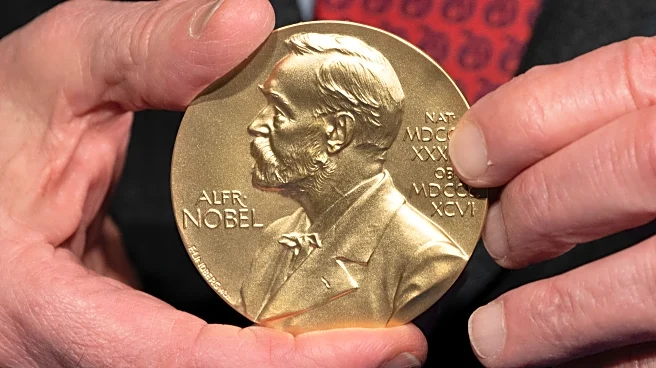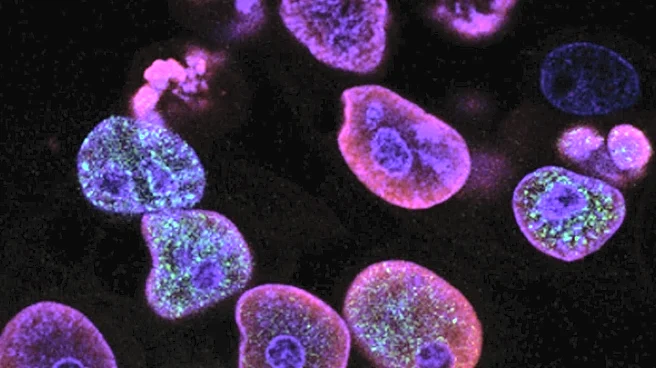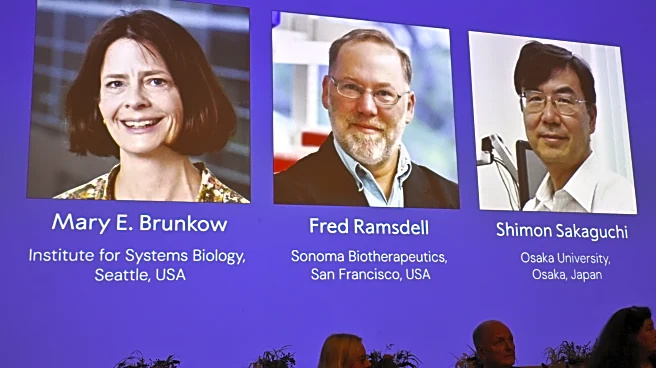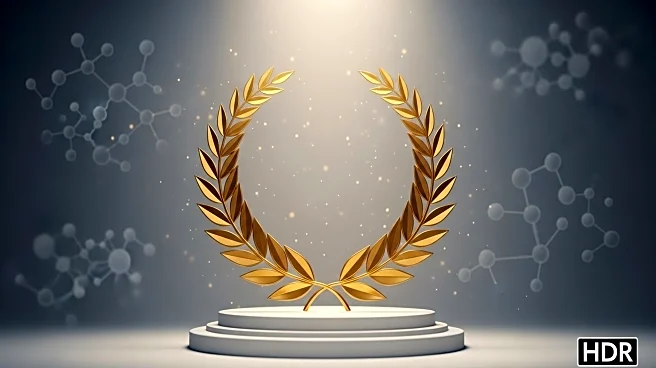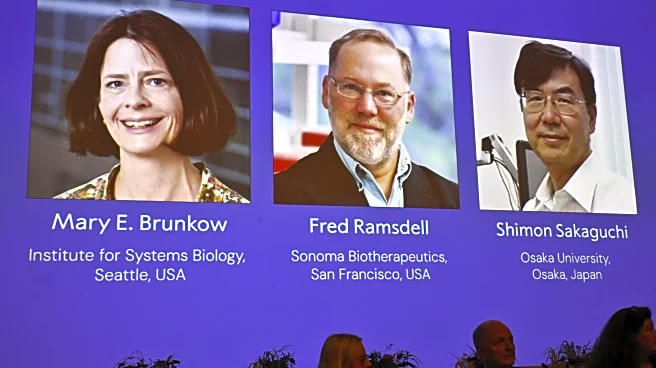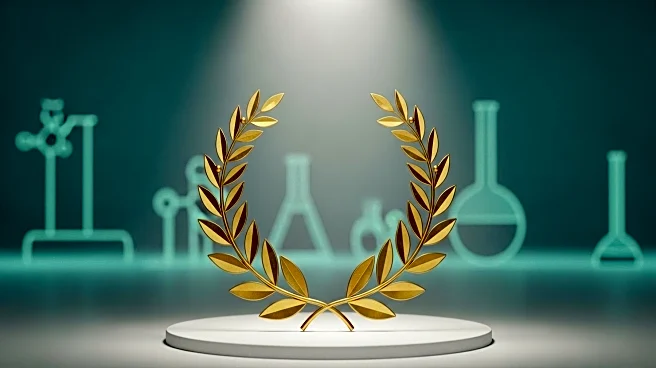What is the story about?
What's Happening?
The Nobel Prize in Physiology or Medicine has been awarded to Mary E. Brunkow, Fred Ramsdell, and Shimon Sakaguchi for their pivotal discoveries regarding the immune system's self-regulation. Their research has elucidated how the immune system avoids attacking the body's own cells, a process crucial for maintaining health. The laureates' work focused on regulatory T-cells, which act as 'security guards' for the immune system, preventing it from mistakenly targeting healthy tissue. This research is foundational for understanding autoimmune diseases and has potential applications in developing therapies for conditions like Type 1 diabetes and rheumatoid arthritis. The prize was announced at the Karolinska Institute in Stockholm, with the winners sharing a monetary award of nearly $1.2 million.
Why It's Important?
The discoveries made by Brunkow, Ramsdell, and Sakaguchi are vital for advancing medical science, particularly in the treatment of autoimmune diseases and organ transplantation. By understanding the role of regulatory T-cells, scientists can develop new therapies that enhance immune tolerance, potentially leading to more effective treatments for autoimmune conditions and reducing the risk of organ rejection. This research provides a deeper insight into the immune system's complexity and its ability to differentiate between harmful and benign cells, paving the way for innovative medical interventions.
What's Next?
The next steps involve translating these scientific insights into clinical applications. Researchers are working on methods to increase the production of regulatory T-cells to improve immune tolerance in patients undergoing organ transplants and those with autoimmune diseases. While these developments are in the early stages, the potential for new therapies is promising. Continued research and collaboration between scientists and biotech companies will be crucial in bringing these treatments to fruition, with the aim of improving patient care and outcomes.
AI Generated Content
Do you find this article useful?


